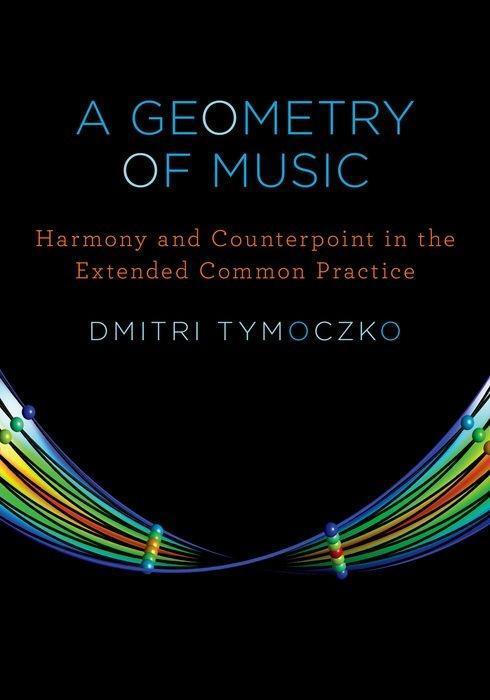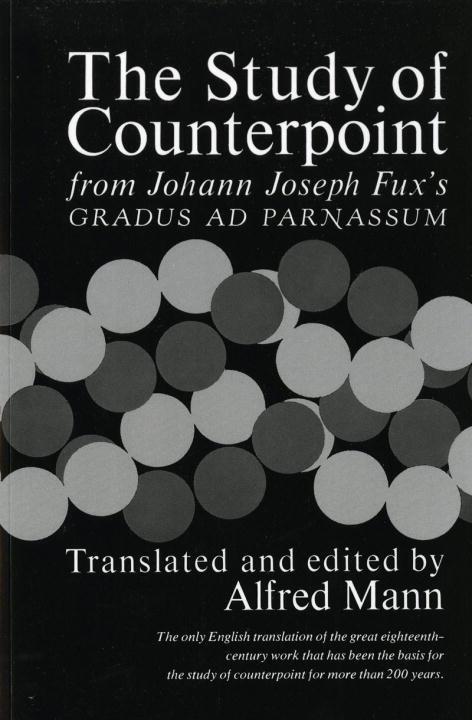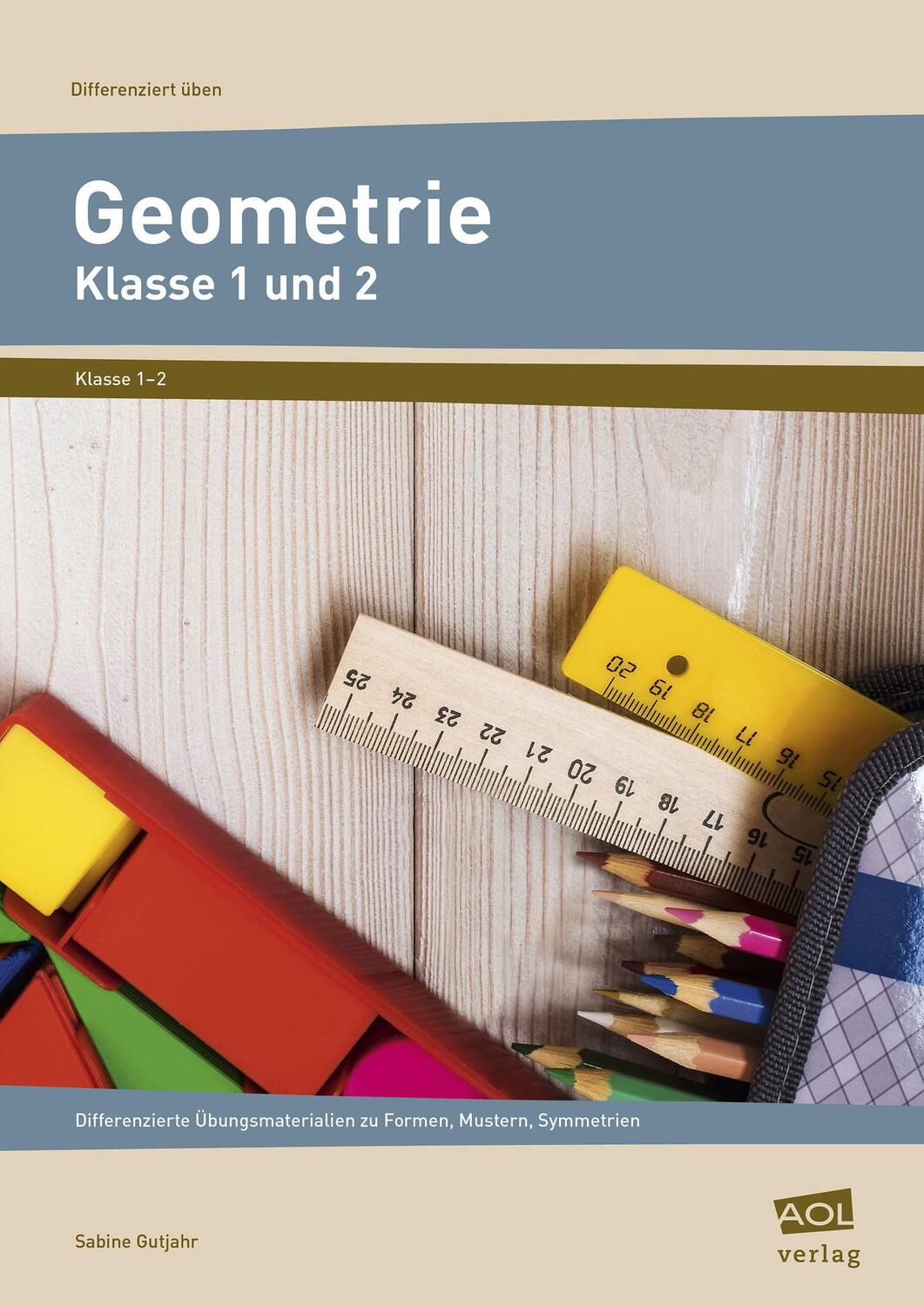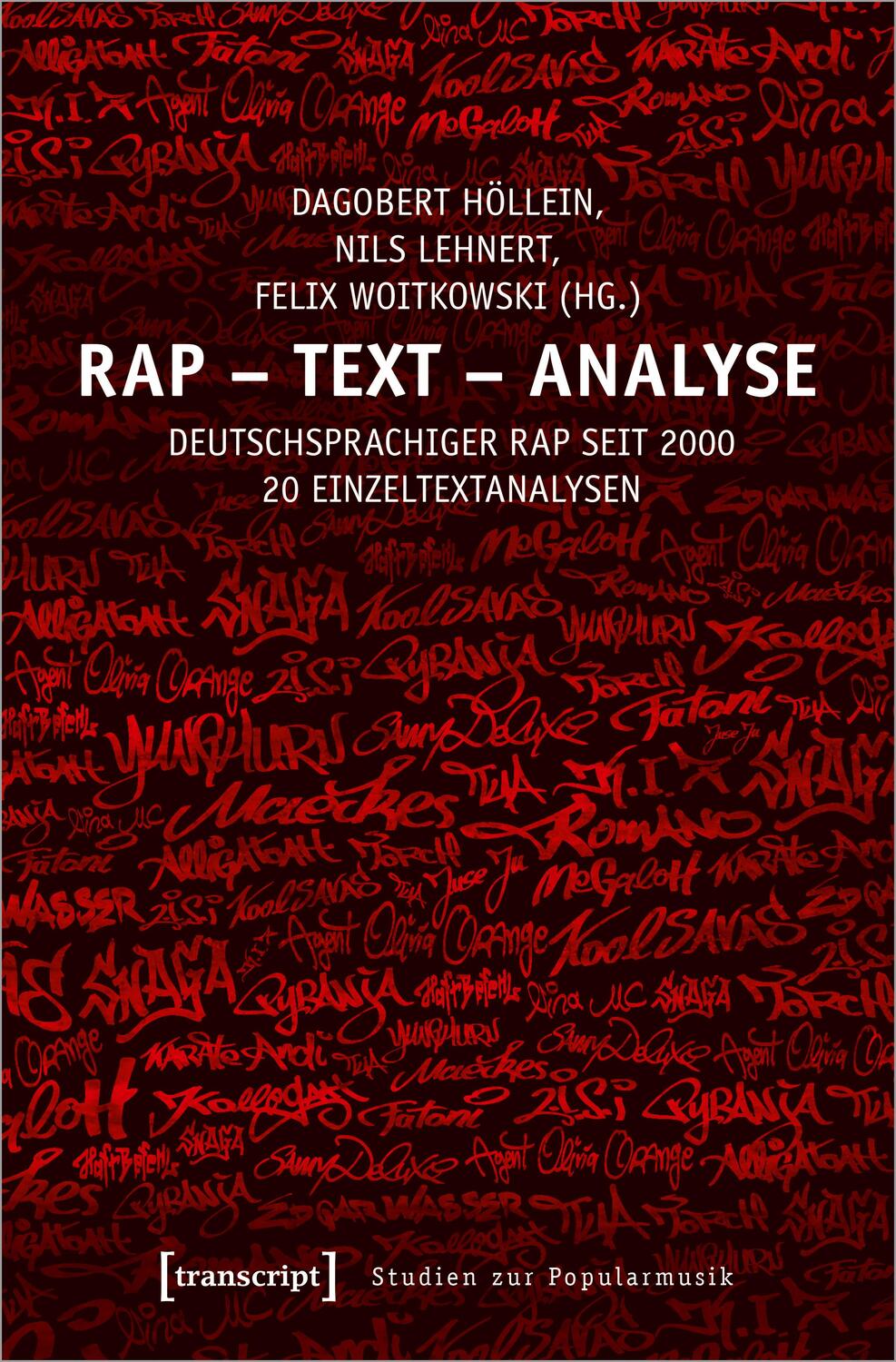Dekorationsartikel gehören nicht zum Leistungsumfang.
Sprache:
Englisch
79,00 €*
Versandkostenfrei per Post / DHL
Aktuell nicht verfügbar
Kategorien:
Beschreibung
In this groundbreaking book, Tymoczko uses contemporary geometry to provide a new framework for thinking about music, one that emphasizes the commonalities among styles from Medieval polyphony to contemporary jazz.
In this groundbreaking book, Tymoczko uses contemporary geometry to provide a new framework for thinking about music, one that emphasizes the commonalities among styles from Medieval polyphony to contemporary jazz.
Über den Autor
Dmitri Tymoczko is a composer and music theorist who teaches at Princeton University. His 2006 article "The Geometry of Musical Chords" was the first music theory article published in the 127-year history of Science magazine, and was widely covered in the popular press. His music has been performed by ensembles throughout the country, and he has received a Rhodes scholarship, a Guggenheim fellowship, and numerous other awards.
Inhaltsverzeichnis
- PREFACE
- PART I. Theory
- 1: Five Components of Tonality
- 1.1 The five features.
- 1.2. Perception and the five features.
- 1.3 Four Claims.
- A. Harmony and counterpoint constrain each other.
- B. Scale, macroharmony, and centricity are independent.
- C. Modulation involves voice leading.
- D. Music can be understood geometrically.
- 1.4 Music, magic, and language.
- 1.5 Outline of the book, and a suggestion for impatient readers.
- 2.: Harmony and Voice Leading
- 2.1 Linear pitch space.
- 2.2 Circular pitch-class space.
- 2.3 Transposition and inversion as distance-preserving functions.
- 2.4 Musical objects.
- 2.5 Voice leadings and chord progressions.
- 2.6 Comparing voice leadings.
- 2.7 Voice-leading size.
- 2.8 Near identity.
- 2.9 Harmony and counterpoint revisited.
- 2.10 Acoustic consonance and near-evenness
- 3.: The Geometry of Chords
- 3.1 Ordered pitch space.
- 3.2 The Parable of the Ant.
- 3.3 Two-note chord space.
- 3.4 Chord progressions and voice leadings in two-note chord space.
- 3.5 Geometry in analysis.
- 3.6 Harmonic consistency and efficient voice leading.
- 3.7 Pure parallel and pure contrary motion.
- 3.8 Three-dimensional chord space.
- 3.9 Higher-dimensional chord spaces.
- 3.10 Voice leading lattices.
- 3.11 Triads are from Mars, seventh chords are from Venus.
- 3.12 Two musical geometries.
- 3.13 Study guide.
- 4.: Scales
- 4.1 A scale is a ruler.
- 4.2 Scale degrees, scalar transposition, scalar inversion.
- 4.3 Evenness and scalar transposition.
- 4.4 Constructing common scales.
- 4.5 Modulation and voice leading.
- 4.6 Voice leading between common scales .
- 4.7 Two examples.
- 4.8 Scalar and interscalar transposition.
- 4.9 Interscalar transposition and voice leading.
- 4.10 Combining interscalar and chromatic transpositions.
- 5.: Macroharmony and Centricity
- 5.1 Macroharmony.
- 5.2 Small-gap macroharmony.
- 5.3 Pitch-class circulation.
- 5.4 Modulating the rate of pitch-class circulation.
- 5.5 Macroharmonic consistency.
- 5.6 Centricity.
- 5.7 Where does centricity come from?
- 5.8 Beyond "tonal" and "atonal."
- PART II. History and Analysis
- 6.: The Extended Common Practice
- 6.1 Disclaimers.
- 6.2 Two-voice medieval counterpoint.
- 6.3 Triads and the Renaissance.
- 6.4 Functional harmony.
- 6.5 Schumann's Chopin.
- 6.6 Chromaticism.
- 6.7 Twentieth-century scalar music.
- 6.8 The extended common practice.
- 7.: Functional Harmony
- 7.1 The thirds-based grammar of elementary tonal harmony.
- 7.2 Voice leading in functional harmony.
- 7.3 Sequences.
- 7.4 Modulation and key distance.
- 7.5 The two lattices.
- 7.6 A challenge from Schenker.
- 8.: Chromaticism
- 8.1 Decorative chromaticism.
- 8.2 Generalized augmented sixths.
- 8.3 Brahms and Schoenberg.
- 8.4 Schubert and the major-third system.
- 8.5 Chopin's tesseract.
- 8.6 The Tristan Prelude.
- 8.7 Alternative approaches.
- 8.8 Conclusion
- 9.: Scales in Twentieth-Century Music
- 9.1 Three scalar techniques.
- 9.2 Chord-first composition.
- A. Grieg's "Drömmesyn," (Vision), Op. 62 no. 5 (1895).
- B. Debussy's "Fetes" (1899).
- C. Michael Nyman's "The Mood That Passes Through You" (1993).
- 9.3 Scale-first composition.
- A. Debussy's "Des pas sur la neige" (1910).
- B. Janácek's "On an Overgrown Path," Series II, no. 1 (1908).
- C. Shostakovich's Fs minor Prelude and Fugue, Op. 87 (1950).
- D. Reich's "New York Counterpoint" (1985).
- E. Reich's "The Desert Music," movement 1 (1984).
- F. The Who's "Can't Explain" (1965) and Bob Seger's "Turn the Page" (1973).
- 9.4 The Subset Technique.
- A. Grieg's "Klokkeklang," (Bell Ringing), Op. 54 no. 6 (1891).
- B. "Petit Airs," from Stravinsky's Histoire du Soldat (1918).
- C. Reich's "City Life" (1995).
- D. Stravinsky's "Dance of the Adolescents" (1913).
- E. The Miles Davis Group's "Freedom Jazz Dance" (1966).
- 9.5 Conclusion.
- 10.: Jazz.
- 10.1 Basic jazz voicings.
- 10.2 From thirds to fourths.
- 10.3 Tritone substitution.
- 10.4 Altered chords and scales.
- 10.5 Bass and upper-voice tritone substitutions.
- 10.6 Polytonality, sidestepping, and "playing out."
- 10.7 Bill Evans's "Oleo."
- 10.8 Jazz as modernist synthesis.
- CONCLUSION
- APPENDIX A. Measuring voice-leading size
- APPENDIX B. Chord geometry: a technical look.
- APPENDIX C. Discrete voice leading lattices.
- APPENDIX D. The interscalar interval matrix.
- APPENDIX E. Scale, macroharmony, and Lerdahl's "basic space."
- APPENDIX F. Some study questions, problems, and activities.
- BIBLIOGRAPHY
- INDEX
Details
| Erscheinungsjahr: | 2011 |
|---|---|
| Genre: | Musik |
| Rubrik: | Kunst & Musik |
| Thema: | Musiktheorie & Musiklehre |
| Medium: | Buch |
| Seiten: | 480 |
| Inhalt: | Buch Gebunden |
| ISBN-13: | 9780195336672 |
| ISBN-10: | 0195336674 |
| Sprache: | Englisch |
| Einband: | Gebunden |
| Autor: | Tymoczko, Dmitri |
| Komponist: | Dmitri Tymoczko |
| Hersteller: | Oxford University Press, USA |
| Maße: | 259 x 187 x 35 mm |
| Von/Mit: | Dmitri Tymoczko |
| Erscheinungsdatum: | 21.03.2011 |
| Gewicht: | 1,006 kg |
Über den Autor
Dmitri Tymoczko is a composer and music theorist who teaches at Princeton University. His 2006 article "The Geometry of Musical Chords" was the first music theory article published in the 127-year history of Science magazine, and was widely covered in the popular press. His music has been performed by ensembles throughout the country, and he has received a Rhodes scholarship, a Guggenheim fellowship, and numerous other awards.
Inhaltsverzeichnis
- PREFACE
- PART I. Theory
- 1: Five Components of Tonality
- 1.1 The five features.
- 1.2. Perception and the five features.
- 1.3 Four Claims.
- A. Harmony and counterpoint constrain each other.
- B. Scale, macroharmony, and centricity are independent.
- C. Modulation involves voice leading.
- D. Music can be understood geometrically.
- 1.4 Music, magic, and language.
- 1.5 Outline of the book, and a suggestion for impatient readers.
- 2.: Harmony and Voice Leading
- 2.1 Linear pitch space.
- 2.2 Circular pitch-class space.
- 2.3 Transposition and inversion as distance-preserving functions.
- 2.4 Musical objects.
- 2.5 Voice leadings and chord progressions.
- 2.6 Comparing voice leadings.
- 2.7 Voice-leading size.
- 2.8 Near identity.
- 2.9 Harmony and counterpoint revisited.
- 2.10 Acoustic consonance and near-evenness
- 3.: The Geometry of Chords
- 3.1 Ordered pitch space.
- 3.2 The Parable of the Ant.
- 3.3 Two-note chord space.
- 3.4 Chord progressions and voice leadings in two-note chord space.
- 3.5 Geometry in analysis.
- 3.6 Harmonic consistency and efficient voice leading.
- 3.7 Pure parallel and pure contrary motion.
- 3.8 Three-dimensional chord space.
- 3.9 Higher-dimensional chord spaces.
- 3.10 Voice leading lattices.
- 3.11 Triads are from Mars, seventh chords are from Venus.
- 3.12 Two musical geometries.
- 3.13 Study guide.
- 4.: Scales
- 4.1 A scale is a ruler.
- 4.2 Scale degrees, scalar transposition, scalar inversion.
- 4.3 Evenness and scalar transposition.
- 4.4 Constructing common scales.
- 4.5 Modulation and voice leading.
- 4.6 Voice leading between common scales .
- 4.7 Two examples.
- 4.8 Scalar and interscalar transposition.
- 4.9 Interscalar transposition and voice leading.
- 4.10 Combining interscalar and chromatic transpositions.
- 5.: Macroharmony and Centricity
- 5.1 Macroharmony.
- 5.2 Small-gap macroharmony.
- 5.3 Pitch-class circulation.
- 5.4 Modulating the rate of pitch-class circulation.
- 5.5 Macroharmonic consistency.
- 5.6 Centricity.
- 5.7 Where does centricity come from?
- 5.8 Beyond "tonal" and "atonal."
- PART II. History and Analysis
- 6.: The Extended Common Practice
- 6.1 Disclaimers.
- 6.2 Two-voice medieval counterpoint.
- 6.3 Triads and the Renaissance.
- 6.4 Functional harmony.
- 6.5 Schumann's Chopin.
- 6.6 Chromaticism.
- 6.7 Twentieth-century scalar music.
- 6.8 The extended common practice.
- 7.: Functional Harmony
- 7.1 The thirds-based grammar of elementary tonal harmony.
- 7.2 Voice leading in functional harmony.
- 7.3 Sequences.
- 7.4 Modulation and key distance.
- 7.5 The two lattices.
- 7.6 A challenge from Schenker.
- 8.: Chromaticism
- 8.1 Decorative chromaticism.
- 8.2 Generalized augmented sixths.
- 8.3 Brahms and Schoenberg.
- 8.4 Schubert and the major-third system.
- 8.5 Chopin's tesseract.
- 8.6 The Tristan Prelude.
- 8.7 Alternative approaches.
- 8.8 Conclusion
- 9.: Scales in Twentieth-Century Music
- 9.1 Three scalar techniques.
- 9.2 Chord-first composition.
- A. Grieg's "Drömmesyn," (Vision), Op. 62 no. 5 (1895).
- B. Debussy's "Fetes" (1899).
- C. Michael Nyman's "The Mood That Passes Through You" (1993).
- 9.3 Scale-first composition.
- A. Debussy's "Des pas sur la neige" (1910).
- B. Janácek's "On an Overgrown Path," Series II, no. 1 (1908).
- C. Shostakovich's Fs minor Prelude and Fugue, Op. 87 (1950).
- D. Reich's "New York Counterpoint" (1985).
- E. Reich's "The Desert Music," movement 1 (1984).
- F. The Who's "Can't Explain" (1965) and Bob Seger's "Turn the Page" (1973).
- 9.4 The Subset Technique.
- A. Grieg's "Klokkeklang," (Bell Ringing), Op. 54 no. 6 (1891).
- B. "Petit Airs," from Stravinsky's Histoire du Soldat (1918).
- C. Reich's "City Life" (1995).
- D. Stravinsky's "Dance of the Adolescents" (1913).
- E. The Miles Davis Group's "Freedom Jazz Dance" (1966).
- 9.5 Conclusion.
- 10.: Jazz.
- 10.1 Basic jazz voicings.
- 10.2 From thirds to fourths.
- 10.3 Tritone substitution.
- 10.4 Altered chords and scales.
- 10.5 Bass and upper-voice tritone substitutions.
- 10.6 Polytonality, sidestepping, and "playing out."
- 10.7 Bill Evans's "Oleo."
- 10.8 Jazz as modernist synthesis.
- CONCLUSION
- APPENDIX A. Measuring voice-leading size
- APPENDIX B. Chord geometry: a technical look.
- APPENDIX C. Discrete voice leading lattices.
- APPENDIX D. The interscalar interval matrix.
- APPENDIX E. Scale, macroharmony, and Lerdahl's "basic space."
- APPENDIX F. Some study questions, problems, and activities.
- BIBLIOGRAPHY
- INDEX
Details
| Erscheinungsjahr: | 2011 |
|---|---|
| Genre: | Musik |
| Rubrik: | Kunst & Musik |
| Thema: | Musiktheorie & Musiklehre |
| Medium: | Buch |
| Seiten: | 480 |
| Inhalt: | Buch Gebunden |
| ISBN-13: | 9780195336672 |
| ISBN-10: | 0195336674 |
| Sprache: | Englisch |
| Einband: | Gebunden |
| Autor: | Tymoczko, Dmitri |
| Komponist: | Dmitri Tymoczko |
| Hersteller: | Oxford University Press, USA |
| Maße: | 259 x 187 x 35 mm |
| Von/Mit: | Dmitri Tymoczko |
| Erscheinungsdatum: | 21.03.2011 |
| Gewicht: | 1,006 kg |
Warnhinweis













